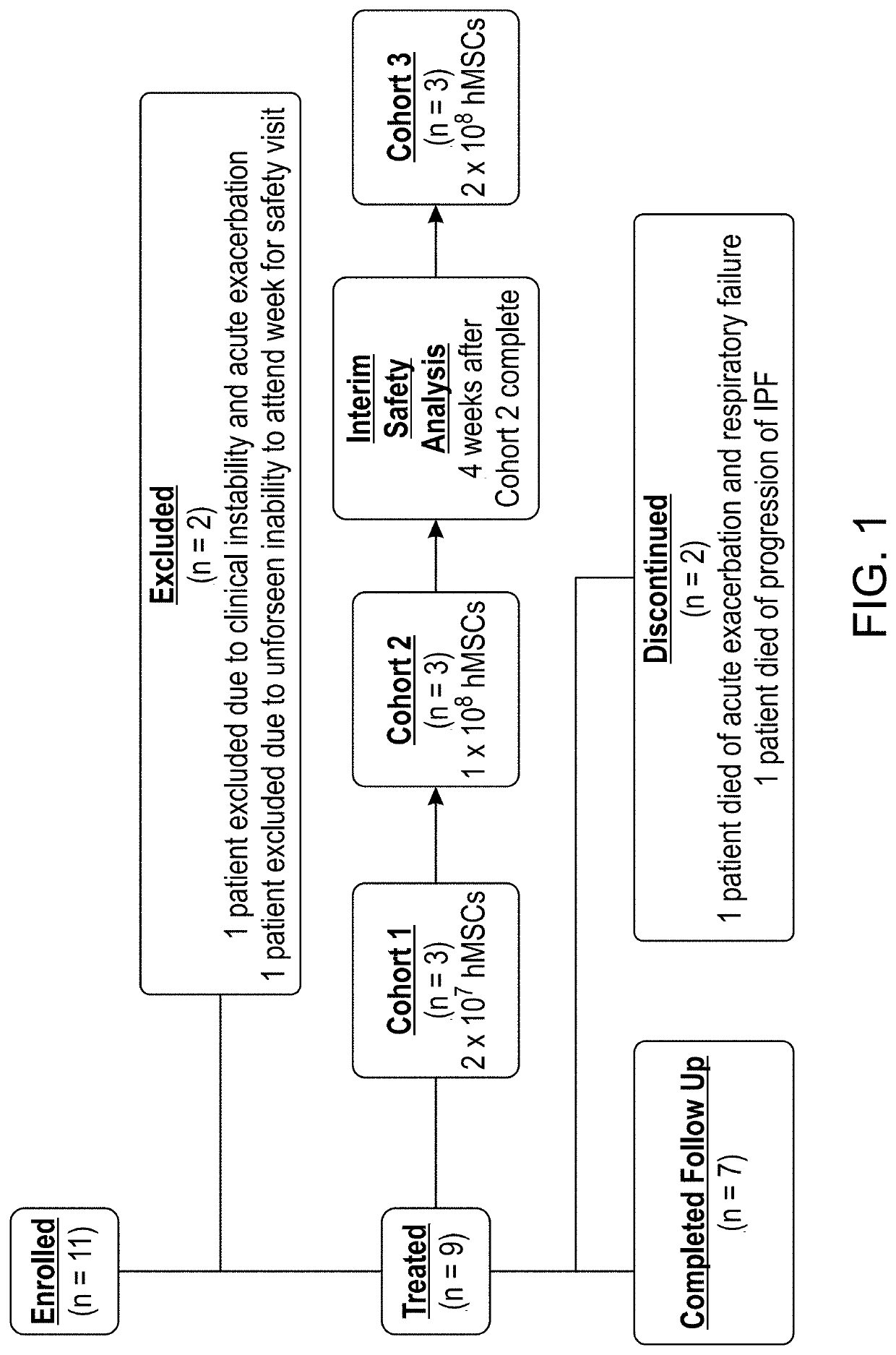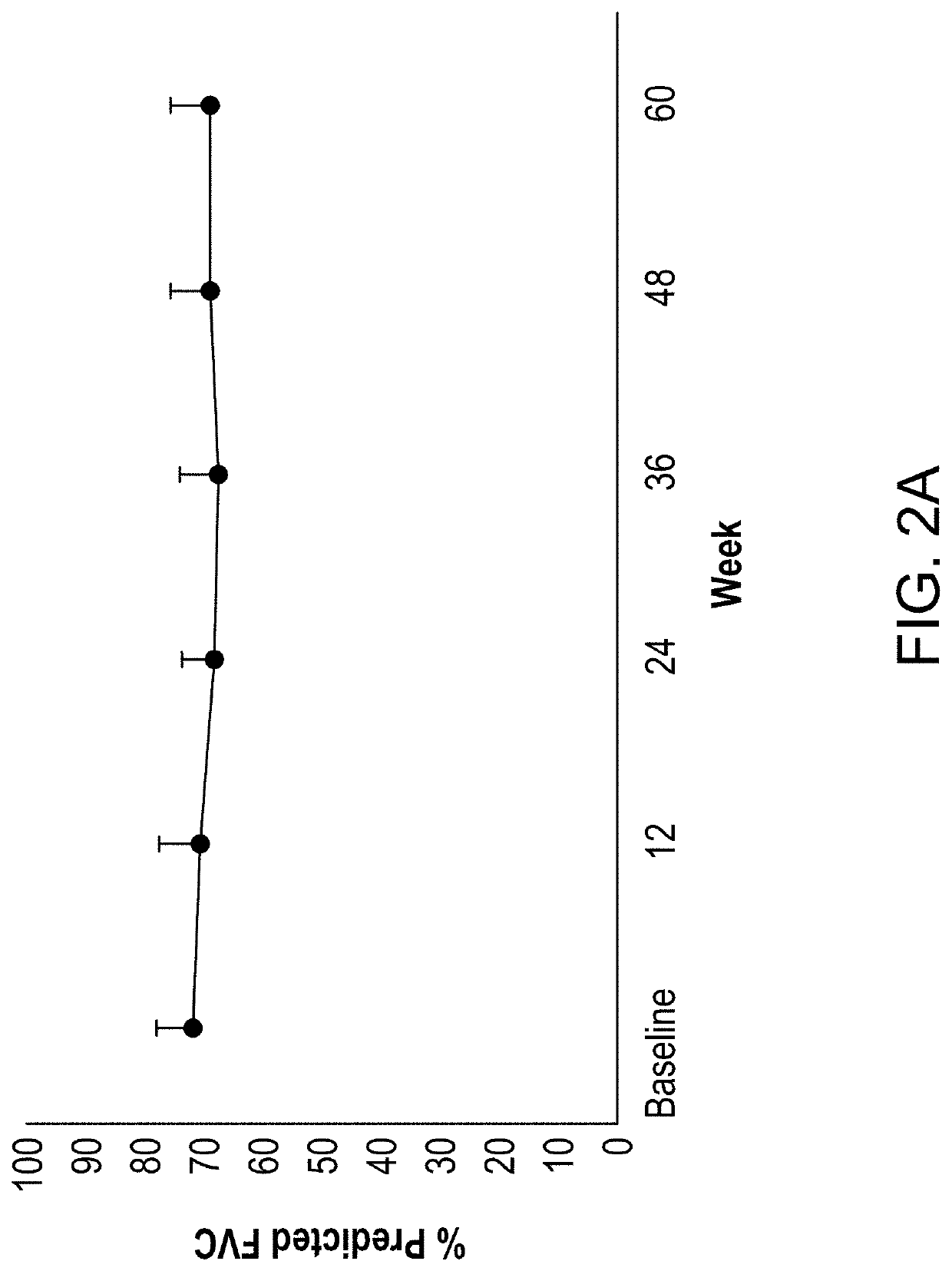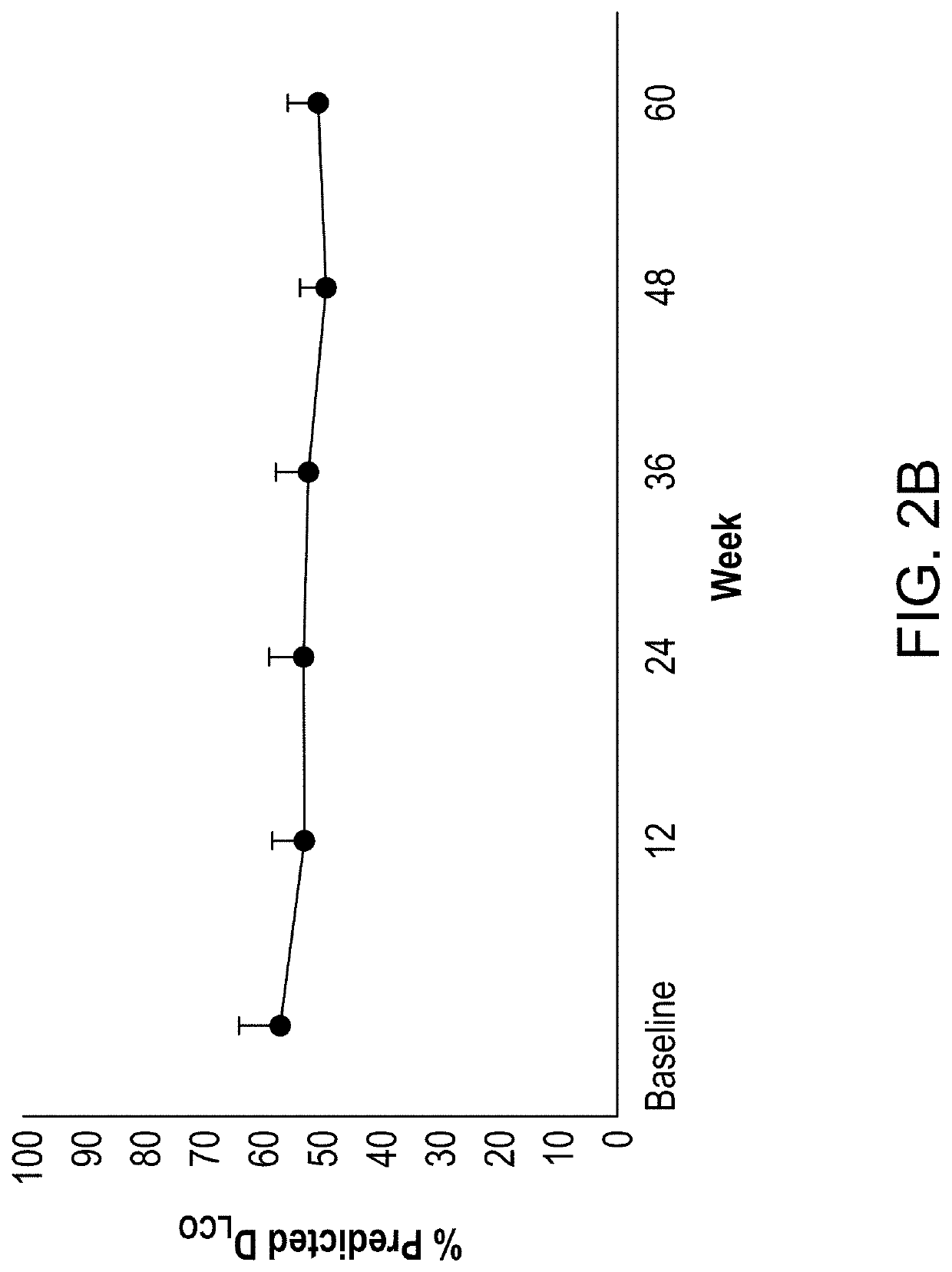Mesenchymal stem cell-derived extracellular vesicles and uses thereof for treating and diagnosing fibrotic diseases
a technology of extracellular vesicles and stem cells, which is applied in the field ofmesenchymal stem cell-derived extracellular vesicles, can solve the problems of abnormal oxygenation and clinical dyspnea, impaired organ function, and wide-ranging and complex molecular processes driving fibrosis
- Summary
- Abstract
- Description
- Claims
- Application Information
AI Technical Summary
Benefits of technology
Problems solved by technology
Method used
Image
Examples
example 1
REFERENCES FOR EXAMPLE 1
[0410]1. Raghu G, et al. An official ATS / ERS / JRS / ALAT statement: idiopathic pulmonary fibrosis: evidence-based guidelines for diagnosis and management. Am J Resp Crit Care Med. 183(6):788-824.[0411]2. Travis W D, et al. Idiopathic nonspecific interstitial pneumonia: report of an American Thoracic Society project. Am J Resp Crit Care Med. 2008; 177(12):1338-1347.[0412]3. Nishimura K, et al. Usual interstitial pneumonia: histologic correlation with high-resolution CT. Radiology. 1992; 182(2):337-342.[0413]4. Johkoh T, Muller N L, Cartier Y, et al. Idiopathic interstitial pneumonias: diagnostic accuracy of thin-section CT in 129 patients. Radiology. 1999; 211(2):555-560.[0414]5. King T E Jr., Bradford W Z, Castro-Bernardini S, et al. A phase 3 trial of pirfenidone in patients with idiopathic pulmonary fibrosis. N Engl J Med. 2014; 370(22):2083-2092.[0415]6. Richeldi L, et al. Nintedanib in patients with idiopathic pulmonary fibrosis: Combined evidence from the T...
example 2
REFERENCES FOR EXAMPLE 2
[0477]1. King T E, Jr., et al. A phase 3 trial of pirfenidone in patients with idiopathic pulmonary fibrosis. N Engl J Med 2014; 370: 2083-2092.[0478]2. Richeldi L, et al. Efficacy and safety of nintedanib in idiopathic pulmonary fibrosis. N Engl J Med 2014; 370: 2071-2082.[0479]3. Hughes G, et al. Real World Experiences: Pirfenidone and Nintedanib are Effective and Well Tolerated Treatments for Idiopathic Pulmonary Fibrosis. J Clin Med 2016; 5.[0480]4. du Bois R M, et al. Forced vital capacity in patients with idiopathic pulmonary fibrosis: test properties and minimal clinically important difference. Am J Respir Crit Care Med 2011; 184: 1382-1389.[0481]5. Eakin E G, et al. Validation of a new dyspnea measure: the UCSD Shortness of Breath Questionnaire. University of California, San Diego. Chest 1998; 113: 619-624.[0482]6. Kupferberg D H, et al. Minimal clinically important difference for the UCSD Shortness of Breath Questionnaire. J Cardiopulm Rehabil 2005; ...
example 3
REFERENCES FOR EXAMPLE 3
[0533]1. Raghu G, et al. Idiopathic pulmonary fibrosis in US Medicare beneficiaries aged 65 years and older: incidence, prevalence, and survival, 2001-11. Lancet Respir Med 2014; 2: 566-572.[0534]2. Collard H R, et al. A new era in idiopathic pulmonary fibrosis: considerations for future clinical trials. Eur Respir J 2015.[0535]3. Hunninghake G M. A new hope for idiopathic pulmonary fibrosis. N Engl J Med 2014; 370: 2142-2143.[0536]4. Toonkel R L, et al. Mesenchymal stem cells and idiopathic pulmonary fibrosis. Potential for clinical testing. Am J Respir Crit Care Med 2013; 188: 133-140.[0537]5. Redente E F, et al. Age and sex dimorphisms contribute to the severity of bleomycin-induced lung injury and fibrosis. Am J Physiol Lung Cell Mol Physiol 2011; 301: L510-518.[0538]6. Peng R, et al. Bleomycin induces molecular changes directly relevant to idiopathic pulmonary fibrosis: a model for “active” disease. PLoS One 2013; 8: e59348.[0539]7. Tashiro J, et al. The...
PUM
| Property | Measurement | Unit |
|---|---|---|
| Mass | aaaaa | aaaaa |
| Diameter | aaaaa | aaaaa |
| Diameter | aaaaa | aaaaa |
Abstract
Description
Claims
Application Information
 Login to View More
Login to View More - R&D
- Intellectual Property
- Life Sciences
- Materials
- Tech Scout
- Unparalleled Data Quality
- Higher Quality Content
- 60% Fewer Hallucinations
Browse by: Latest US Patents, China's latest patents, Technical Efficacy Thesaurus, Application Domain, Technology Topic, Popular Technical Reports.
© 2025 PatSnap. All rights reserved.Legal|Privacy policy|Modern Slavery Act Transparency Statement|Sitemap|About US| Contact US: help@patsnap.com



